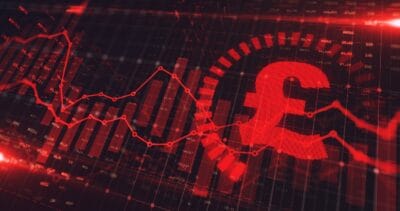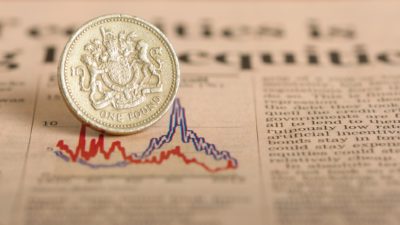 Life and general insurance company Aviva’s (LSE: AV) (NYSE: AV.US) shares staged a dramatic surge from around 300p in March 2013 to about 530p in May 2014. It’s easy to see why — earnings are set to more than double in the current trading year to around 47p per share.
Life and general insurance company Aviva’s (LSE: AV) (NYSE: AV.US) shares staged a dramatic surge from around 300p in March 2013 to about 530p in May 2014. It’s easy to see why — earnings are set to more than double in the current trading year to around 47p per share.
However, Aviva’s been here before. It last achieved earnings of that magnitude during 2009. The years in between saw the company deliver a smile-shaped earnings’ curve that is nothing to smile about, because its nadir produced an earnings-per-share loss of 11.2p during 2012.
Cyclical to the core
The volatility of the shares is staggering: exceeding 1,100p in year 2000, down to 350p during 2002, flirting with 850p in 2006 and plunging to 150p at the beginning of 2009, which was a year that it ended up posting peak earnings, about 12 or so months after the share-price trough.
Should you invest £1,000 in Macfarlane Group Plc right now?
When investing expert Mark Rogers has a stock tip, it can pay to listen. After all, the flagship Motley Fool Share Advisor newsletter he has run for nearly a decade has provided thousands of paying members with top stock recommendations from the UK and US markets. And right now, Mark thinks there are 6 standout stocks that investors should consider buying. Want to see if Macfarlane Group Plc made the list?
Because stock markets look forward, share prices of cyclical firms such as Aviva always move well in advance of lagging financial results. Aviva’s shares were right to hit that 150p low in early 2009 because earnings did indeed collapse to that loss of 11.2p per share during 2012. However, by the time Aviva posted the loss in early 2013, with its full-year results, the shares were motoring upwards in anticipation of earnings’ recovery.
Aviva talks about its turnaround plans and its opportunities for growth. There could be some mileage in that, but a lot of what we’ve seen recently is just recovery from a cyclical bottom. With earnings now back to where they were in 2009, I reckon the most recent share-price growth spurt is over. Going forward, share-price progress seems set to stay on-trend with whatever business growth Aviva can muster up. So does that make Aviva a good candidate for a steady income investment now? I don’t think so.
A poor dividend record
As well as the difficulty of timing an investment in Aviva such that capital fluctuations don’t end up emasculating income gains from dividends, the dividend record is poor. Aviva doesn’t shy from dividend slashing:
| Year to December | 2009 | 2010 | 2011 | 2012 | 2013 |
|---|---|---|---|---|---|
| Dividend per share | 24p | 25.5p | 26p | 19p | 15p |
Most investors approach dividend investing with a long-term horizon. We might be lucky. An investment in Aviva today could catch a sustained period of dividend growth, which, over years, could see total returns notch up an impressive gain.
However, the longer we hold on, the closer we move towards the next peak earnings event with Aviva. Immediately after is the next cyclical plunge, and our multi-year gains could be erased over a period of days or weeks – we might even show an overall loss on our investment.
Cyclical firms such as Aviva just don’t make good long-term dividend investments. The cyclicals are for trading, to catch the ups and downs of their volatile share prices, but even that is difficult to do.
What next?
Aviva doesn’t cut the mustard as a safe income investment. It’s tempting to think investing to harvest dividends is an easy option on the stock market. It isn’t. All investing is fraught with difficulty and it’s easy to make a lash-up of it, even with a big name like Aviva.







